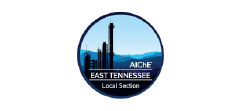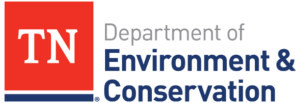TRACK 3 – OPTIMIZATION, DIGITAL, MOBILITY, SAFETY
Click on seminar title below to read the abstract
Join this session to learn how current and emerging systems will accelerate and enhance the speed and quality of decision making through digital transformation. Speakers from up to five companies will each make 8 minute presentations followed by a panel discussion and Q&A. The panel will also address preparing employees to manage the digital divide. It’s often a matter of encouraging workers to embrace new technological tools and discard outmoded ways of doing things. With the rapidly increasing availability of new technology in manufacturing applications, the change management associated with adoption is increasingly important.
Participating Panelists are being finalized. The following group of six will be narrowed down to four or possible second panel may be held on the next day.:
- Matt Reymann, Global VP of the Chemical Industry Business Unit, SAP – Driving Transformation Across the Chemical Value Chain
- SAP America
- Siemens – How an integrated end-to-end modeling framework accelerates decision making and improves quality
- Jose Roberto Manzano, General Manager CIS NA
- AVEVA – Connecting APEX & OPEX Information to Supercharge Decision Making
- Jeffrey Murdock, Director of Sales – Southeast Market
- Symphony Industrial AI – AI based multi-variate analysis for asset health and process optimization
- Dominic Gallello, CEO
- Moderator: Chris Potts, Eastman Chemical company
Steam process equipment is critical to optimized production, yet often the applications can be incorrectly installed. Issues can include suboptimal steam supply or ineffective condensate drainage with the effect of causing accelerated maintenance requirements, unscheduled shutdown events, or lowered production rates. Using principles that follow API 580/581 for risk mitigation, proven best practice installations can eliminate many of the problems caused by poor quality steam or condensate back-up. Presentation focus is based on TLV global site experiences, and provides recommendations to optimize steam turbine, heat exchanger, flare, and vacuum system installations.
What attendees will learn:
- Importance to provide optimized heat quality (steam asset) to equipment
- Mitigate issues with steam turbines
- Optimize production from heat exchangers
- Sustain reliable flare operation
- Improve & sustain vacuum system optimal performance
Digital transformation is happening all around us. As an ever-increasing number of connected smart devices are installed in industrial manufacturing plants, the opportunity to safely and securely collect additional data pertaining to key assets and their operating environment has suddenly become a reality. Okay, but once this data is collected, what happens to it? Often, it’s left lying dormant in the plant’s historical database rather than being converted into information that can be transformed into knowledge from which actionable decisions can be made that positively impact the bottom line. This presentation will cover some of the best applications where the digital transformation is being realized “one app at a time”.
What attendees will learn:
- Data can be converted into information, information into knowledge, and knowledge into actionable decisions.
- Tools are available today to address a variety of operations and maintenance use cases.
- Use case examples that will be discussed include…
a. Process equipment (e.g. compressors, pumps) predictive maintenance
b. Alarm management… Ongoing monitoring, assessment, and improvement
c. Control valve monitoring and predictive maintenance
d. Connected worker safety and performance improvement
As decision-makers in the process industry embrace Digital Transformation to improve visibility over their businesses, to increase their asset reliability and to optimize their operations, it is imperative to consider a Digital Twin as the first step of this transformation in support of top quartile operation performance. Technology enhancements have improved the scalability of dynamic simulation solutions, making Digital Twin a practical investment for any operations manager to make, regardless of the size of the plant or the industry. It allows plant operations to reduce the cost and risk of improving the operation and control of the plant and supports upskilling of the work force. Digital Twin is also proven to provide value to the execution of capital projects and control system modernization as well as the lifecycle operation performance of the plant. In this paper we will discuss advances in Digital Twin and dynamic simulation technology and highlight some proven use cases.
What attendees will learn:
In this paper we will discuss:
- Advances in Digital Twin and dynamic simulation technology
- Proven use cases for the Digital Twin
- Practical application for Operational and Project Excellence
Various industries are seeing increased pressure to monitor and quantify leaks of various toxic and explosive gases driven by increased public awareness, government regulations, and investor demands. This is especially true for petrochemical plants and the oil and gas industry as a whole. This is requiring more instrumentation, and in particular, better coverage for gas detection throughout plants. Operators are pressed to manage budgets and try to limit capital expenditures and maximize productivity at the same time. Gas detection does not need to drain valuable capital expenditure or be difficult to integrate into the plant. Full wireless solutions can reduce overall installation costs by 50%, including the cost of equipment, and reduce the time to install instrumentation by more than 80%.
This paper will discuss the experience of two operators. One case is a natural gas company eager to detect gas inside containers for the safety of personnel and where current gateways already had all wired connections used by other process instrumentation. Running new power and communication lines would be time and cost prohibitive due to long permit process and cost of running conduit. The second case is a utility in California needing to meet safety regulations on a very short timeline due to findings during a site audit. Both were able to meet their gas detection needs on time and under budget by using a fully wireless gas detector.
What attendees will learn:
- Learn from the experience of two end users on how they were able to increase coverage in measuring for leaks using a wireless gas detection system, simplifying engineering and deployment costs and timing.
- Understand some of the considerations for wireless detectors and any potential limitations of the approach.
Stephen Reynolds, Industry Principal – Chemicals, Aveva
Daniel Marlow, Analytics Leader, Eastman Chemical Company
What attendees will learn: To be announced
- Learn the PI System and Business Intelligence tools available for tracking asset utilization. Discuss possible applications beyond AU and OEE.
Dominic Gallello, CEO,Symphony Industrial AI.
What attendees will learn:
- The data challenge
- AI based multivariate analysis to provide improved machine health – case studies
Dominic Gallello, CEO,Symphony Industrial AI.
What attendees will learn:
- Moving from SPC to AI optimizers
- Process optimization case studies
Put down your clipboards and stop wasting time entering information twice. Join the digital transformation and use intrinsically safe mobile devices connected seamlessly to your companies network to improve your mobile workforce productivity and reduce chance of human error. From remote mentor utilizing the IS mobile device’s high resolution cameras to utilizing the high speed Wi-fi connectivity to control batch production using a tablet as a mobile HMI, there are many many different use cases for IS mobile devices in the process industry!
What attendees will learn:
- The specifications of our multiple different types of mobile devices certified for hazardous areas including smartphones, tablets and wearables
- Some common use cases which demonstrate a very quick ROI for IS mobile device deployments
- Practical wireless connectivity solutions in hazardous areas for mobile devices
- Other use cases for wireless networks in hazardous areas
The potential for a worker to create value for the business is a function of two dimensions:
(1) the operating culture that empowers them to solve problems ranging in scope; and
(2) the enabling technology that determines the efficacy of how the problem gets solved.
Using these two dimensions, we will set up a framework to discuss various client scenarios for empowered workers as well as examples of the enabling technology.
What attendees will learn:
1. Digital Transformation of Work starting with Connected Workers and extending on to Empowered Workers
2. Understanding the new way of work and how technology enables it



